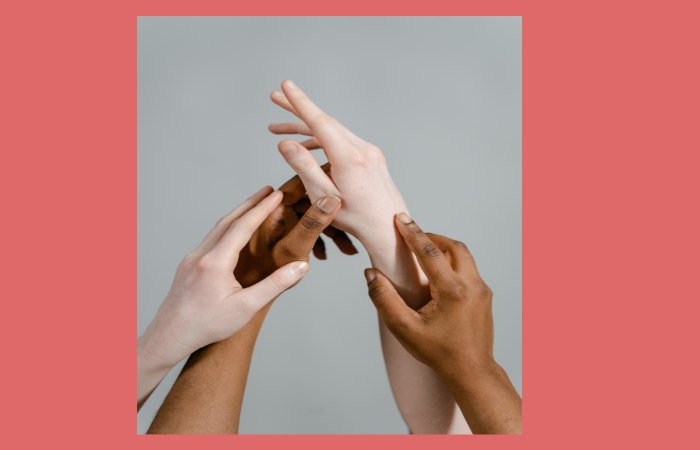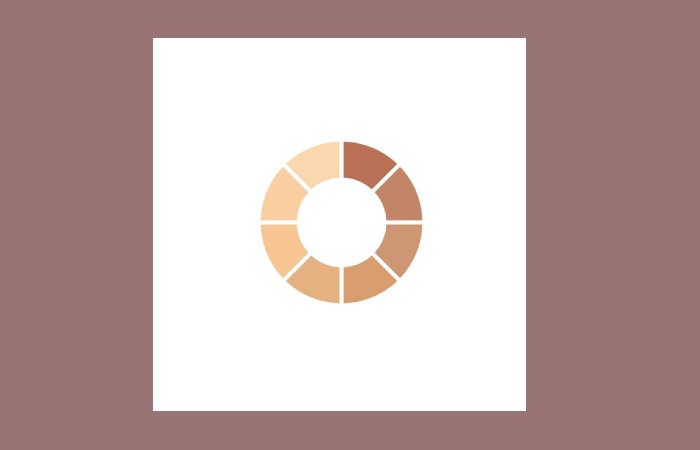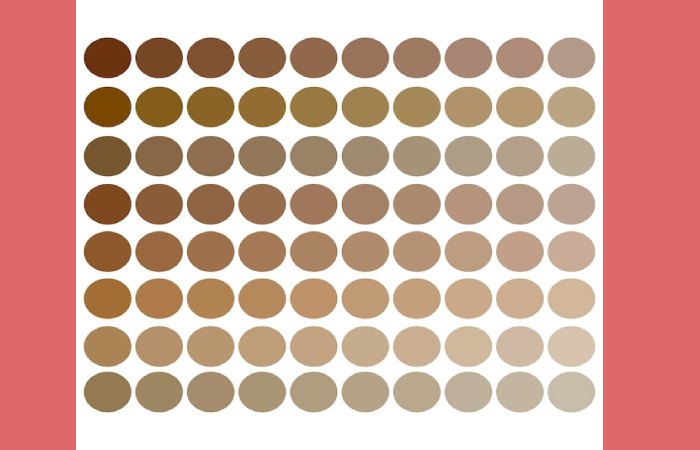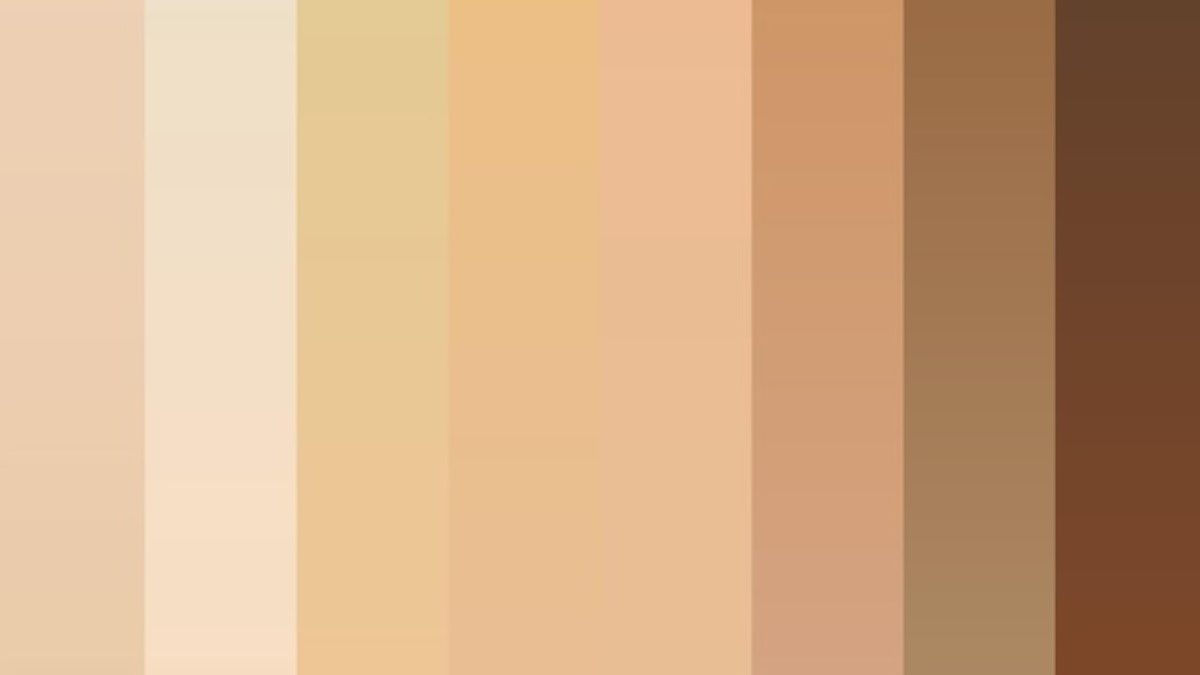Table of Contents
Introduction
Skin Color Chart – The skin tone is the amount of melanin in your epidermis (outer layer of the skin) as genetically endowed. Melanin, called melanocytes -is the complex polymer produced by the cells. It refers to a group of pigments in human skin that naturally occur in dark brown or black stains.
Skin is exposed to sunlight, and ultraviolet rays from the sun damage the skin. For this reason, the skin tone may vary depending on how you spend your time in unprotected sun exposure, and the skin tone is based on genetic makeup from birth. Our ancestors adapted to the environment, and those living in sunnier regions and climates evolved to naturally produce melanin for sun protection as they had darker skin tones. It isn’t easy to categorize into skin tones, and there are different types you can use to determine your skin tone:
There are three skin tones
- Light,
- Medium,
- Dark
Light – Skin Color Chart
The northern European countries historically tend to have Light or fair skin tones, which faced frequent snow or cloud coverage as they don’t need much melanin protection. People are usually very delicate to the sun, and burns are much easier than those dark skin if your skin tone matches the skin tone, which is diligent with your UV Protection and use screen care usage.
Medium – Skin Color Chart
This complexion is typical of Southern Europe and Northern Asian descent. As they refer to olive, this skin tone is neutral. And the well-balanced beige appearance will make deciding the right foundation shade much easier. If this is your skin tone, you might probably get tan in skin tone.
Dark – Skin Color Chart
This complexion usually originates from some parts of the world with the most contact with ultraviolet radiation, such as the Middle East, India, and Africa. As those have medium skin tones, you are not exempted from the skin tone.
Therefore, these skin tones are speaking in broad, general terms.
Again, these three skin tones speak in broad terms that can be broken down into much smaller specs. For example, you can distinguish between clear and transparent, while “dark” can mean espresso, brown, or ebony. Determining skin tone and subtle variations depends on your unique skin tone.
What is Skin Complexion?

Before I teach you how to determine your skin tone, for those who are still unsure, it is worth noting that skin tone and appearance are not the same; Tone refers to the style of your skin, whereas your complexion includes your overall appearance. Think rosy red cheeks or dark circles under the eyes. “Skin” consists of these colours and your natural skin tone. It also indicates texture, such as dry versus oily. Learn more about determining your skin type here.
Please choose the right products for your skin tone and complexion, i.e. those looking to decrease shine and redness should look for mattifying products, those with uneven tone should get colour correctors etc.
Skin Color Chart – Determine Your Skin Tone

Before struggling to find the best product, check out the perfect development and check out some of the ways to determine the skin tone of your ideal match:
Face in Natural Light
Suppose you notice grey tome while wearing the makeup, as your foundation does not complement your undertone. Wash your face thoroughly, and clear any makeup on the skin. Lighting affects the appearance of your skin, so find natural lighting. To know your skin tone, head the mirror out of the window in the sunlight to check your natural skin tone. Always Observe your jawline, as it’s less affected by color changes than the rest of your face. To find the surface color: jaw is very much important. It would help if you blended the jaw area.
The Silver/Gold Test
You have cool undertones if the silver skin complements your skin better than gold. If having warm skin tones, gold looks better
Look at Your Veins
- Check the appearance of your skin in the natural light of your veins beneath your skin.
- Your tone – cool skin tone if the vein appears blue or purple.
- You have a warm skin tone if the vein looks green or blue.
- You might have a neutral skin tone if you can’t tell about your vein being green or blue.
Skin Color Chart – What Are The Aspects Affect The Color Of Your Skin?
A few factors can affect your skin tone, but ultimately your skin tone is determined by melanin, which is a product of your genetic makeup. Melanin is produced by cells called melanocytes found in the skin and is the main determining factor of skin colour in humans. Depending on your race and the location of your ancestors, your skin may have more melanin, which helps protect you and your skin from molecular damage caused by UV rays. The warmer and brighter the area of your home, the more likely your skin has melanin.
Your genes determine how light or dark your skin can be, but sun exposure can also increase it. You will have more ivory skin if you have naturally pale skin and frequently stay indoors. If you have naturally dark skin and spend a lot of time outdoors while tanning or enjoying the outdoors, it will darken due to excessive sun exposure. It means that the two main factors that affect your skin color are your hereditary makeup and what your skin does when exposed to the sun.
When trying to determine your skin tone, you should take these two factors into account.
Thus, awareness of your skin’s natural pigment and genetic tendencies and the effects sun exposure has on your skin can work to your advantage in finding your skin tone.
Skin Color Chart – Frequently Asked Question
How do I know what type of skin I have?
Therefore, there are several different ways to find out your skin tone. And most of them are simple, including the ones we mentioned above, to help you along your skin tone/release journey.
When you ask yourself, “What is hidden?” You need to keep an open mind and use the helpful advice we’ve already told you about your fault. And also, you may already have an idea or be able to figure it out based on simple clues, but you still want to ensure you’re taking the proper steps to know where your skin falls on the lower spectrum. Let’s go.
How can I know the Tone of the Skin through My Veins?
Your veins are primarily a telltale sign of many things related to health, but for today’s purpose, they can help you find your skin with a simple glance. Look at the veins in your hand part. You can notice some of them right away. When you do this, you’ll want to catch the colour you see, as it can help you determine your skin tone – pretty cool.
You have cool undertones if you notice that your veins ar5e blue or purple. Maybe your veins are green or olive? It means you have a warm undertone.
What is the Peach Undertone?
Peach undertones are best recognized as those with yellow and red undertones, which give the skin a balanced appearance and a peach complexion. If your skin has a peach undertone, it means you have a warm undertone.
Skin Color Chart – Key Takeaway

Here are the key Takeaways: Skin Color Chart
- Genetically endowed amount of melanin in the outer layer of the skin epidermis. And the broad range from light, to medium, to dark.
- Thus, undertones might vary from cool, warm and neutral, referring to the muted colour beneath the skin surface.
- Skin complexions differ from skin tones, As your faces differ in your skin’s overall appearance.
- Several factors can impact your skin tones, and the two things are skin melanin levels and your skin exposure to the sun.
- Determine the skin tone by looking at your face in normal light.
- Take the silver/gold test, look at your veins, and observe how your skin reacts o sun exposure.
- You are buying the right makeup product for your skin tone, which can help your money worth and confirm that you are not spending money on products that don’t suit you.
- Cosmetics has color science, a mineral in cosmetics that is chemical free and designed for all skin tones and people of all ages.
- Determine your skin undertone simply by checking the veins in your hands.
Skin Color Type – Skin Color Chart
- Type 1 – very light skin
- Type 2 – fair skin
- Type 3 – Medium complexion
- Type 4 – olive peel
- Type 5 – brown leather
- Type 6 – Dark Skin
Type 1 – Very Light Skin
Type 1 pale skin due to reduced amount of melanin. People with such skin are very susceptible to sunburn, even in the dim sunlight. However, this skin does not tan quickly.
Type 2 – Fair Skin
A pale or light complexion characterizes the skin. The skin burns, tans and peels easily in the sun. People with this skin tone also freckle when exposed to sunlight.
Type 3 – Medium Complexion
People with type 3 skin have skin tones ranging from light to dark, with golden undertones. And also, sometimes the skin burns from exposure to the sun. Instead of freckles, tan the skin evenly.
Type 4 – Olive Peel
In this type, the skin colour appears light brown. People with this shade rarely get sunburned but are more likely to tan when exposed to the sun.
Type 5 – Brown Leather
Brown skin rarely burns but tans easily. People with type 5 skin seldom have freckles.
Type 6 – Dark Skin
The skin contains a higher level of melanin than other skin types. People with dark skin do not get sunburn or freckles—however, the skin ages very quickly due to the high melanin content.
Conclusion
In this Article, We discussed the skin color chart. Here we discussed skin-related topics. The skin color chart explains many skin tones, and this article also discusses skin undertones. Thus, the above article is just for informational purposes.

